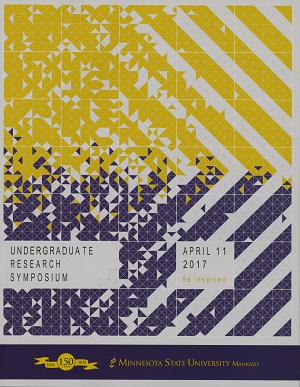Academic and Non-Academic Stress of College Students Enrolled in Physical Activity Classes
Location
CSU Ballroom
Start Date
11-4-2017 2:00 PM
End Date
11-4-2017 3:30 PM
Student's Major
Human Performance
Student's College
Allied Health and Nursing
Mentor's Name
Jessica Albers
Mentor's College
Allied Health and Nursing
Description
College students often see a decline in their physical activity, in pair with an increase in psychological stress. Many universities aim to increase physical activity and spark new interest by offering a wide variety of health and physical activity classes for all students. The purpose of this study was to explore demographic differences among students in the physical activity classes and to examine how stress affects how students self-select into different types of physical activity classes. Students who agreed to participate in the study signed a consent form stating they are 18 years or older and understood the procedure and requirements. Participants (n=159) were then asked to fill out a demographics questionnaire and were to take two surveys sent out through electronically through Qualtrics during the second and third week of the semester. The surveys assessed psychological stress, both academically related (Academic Stress Scale) related and non- academically related (Perceived Stress PSS-10) stress. SPSS was used to analyze the data. Between group differences were analyzed using Multiple Analysis of Variance (MANOVA). All data is collected and is currently being analyzed for the Undergraduate Research Symposium. Results will be concluded at a further date.
Academic and Non-Academic Stress of College Students Enrolled in Physical Activity Classes
CSU Ballroom
College students often see a decline in their physical activity, in pair with an increase in psychological stress. Many universities aim to increase physical activity and spark new interest by offering a wide variety of health and physical activity classes for all students. The purpose of this study was to explore demographic differences among students in the physical activity classes and to examine how stress affects how students self-select into different types of physical activity classes. Students who agreed to participate in the study signed a consent form stating they are 18 years or older and understood the procedure and requirements. Participants (n=159) were then asked to fill out a demographics questionnaire and were to take two surveys sent out through electronically through Qualtrics during the second and third week of the semester. The surveys assessed psychological stress, both academically related (Academic Stress Scale) related and non- academically related (Perceived Stress PSS-10) stress. SPSS was used to analyze the data. Between group differences were analyzed using Multiple Analysis of Variance (MANOVA). All data is collected and is currently being analyzed for the Undergraduate Research Symposium. Results will be concluded at a further date.
Recommended Citation
Kizlik, Lauren and Kristin Nassen. "Academic and Non-Academic Stress of College Students Enrolled in Physical Activity Classes." Undergraduate Research Symposium, Mankato, MN, April 11, 2017.
https://cornerstone.lib.mnsu.edu/urs/2017/poster-session-B/18



